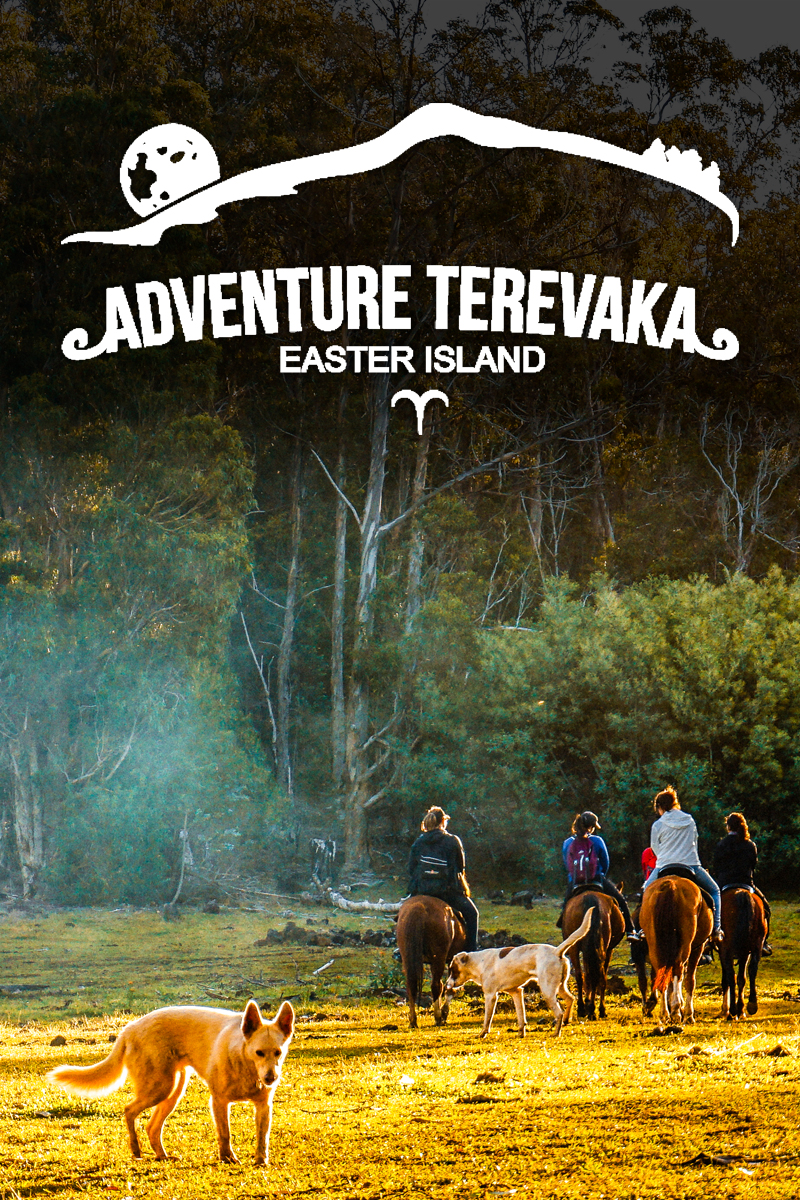[et_pb_section fb_built=”1″ _builder_version=”4.26.0″ _module_preset=”default” background_image=”https://moevarua.com/wp-content/uploads/2024/07/Fondo-El-Impacto-de-la-Arqueoastronomia-en-Rapa-Nui.jpg” hover_enabled=”0″ global_colors_info=”{}” custom_margin=”0px||0px||false|false” custom_padding=”0px||0px||false|false” sticky_enabled=”0″][et_pb_row _builder_version=”4.26.0″ _module_preset=”default” global_colors_info=”{}”][et_pb_column type=”4_4″ _builder_version=”4.26.0″ _module_preset=”default” global_colors_info=”{}”][et_pb_text _builder_version=”4.26.0″ _module_preset=”default” text_text_color=”#FFFFFF” hover_enabled=”0″ global_colors_info=”{}” sticky_enabled=”0″]
The Rapanui Planetarium Foundation has once again made its mark at the 11th School Astronomy Congress of 2023, held in the vibrant city of Concepción. For the second consecutive year, the foundation took first place at this prestigious event, once again highlighting the cultural and scientific richness of Rapa Nui.
This year, the award was given to the fascinating research project led by Vaihani Tepije Casanueva from Lorenzo Baeza School and Samuel Valck Meza from San Sebastián de Akivi School. Their study focused on the archaeoastronomical relevance of the Tahai ceremonial center, located on the west coast of Rapa Nui. This research not only highlights the historical importance of Tahai but also sheds light on its astronomical significance.
[/et_pb_text][/et_pb_column][/et_pb_row][/et_pb_section][et_pb_section fb_built=”1″ fullwidth=”on” theme_builder_area=”post_content” _builder_version=”4.26.0″ _module_preset=”default”][et_pb_fullwidth_image src=”https://moevarua.com/wp-content/uploads/2024/07/Tepije-Casanueva-y-Valck-Meza-realizando-disertacion.jpg” _builder_version=”4.26.0″ _module_preset=”default” theme_builder_area=”post_content” title_text=”Tepije-Casanueva-y-Valck-Meza-doing-dissertation” hover_enabled=”0″ sticky_enabled=”0″][/et_pb_fullwidth_image][/et_pb_section][et_pb_section fb_built=”1″ theme_builder_area=”post_content” _builder_version=”4.26.0″ _module_preset=”default” background_color=”#FFFFFF” hover_enabled=”0″ sticky_enabled=”0″ custom_margin=”0px||0px||false|false” custom_padding=”0px||0px||false|false”][et_pb_row _builder_version=”4.26.0″ _module_preset=”default” theme_builder_area=”post_content”][et_pb_column _builder_version=”4.26.0″ _module_preset=”default” type=”4_4″ theme_builder_area=”post_content”][et_pb_text _builder_version=”4.26.0″ _module_preset=”default” theme_builder_area=”post_content” hover_enabled=”0″ sticky_enabled=”0″ text_text_color=”#E02B20″ text_font=”Abril Fatface||||||||” text_font_size=”29px” custom_padding=”0px||0px||false|false” custom_margin=”0px||0px||false|false”]
Discovering TAHAI
[/et_pb_text][et_pb_text _builder_version=”4.26.0″ _module_preset=”default” theme_builder_area=”post_content” hover_enabled=”0″ sticky_enabled=”0″ text_text_color=”#E09900″ text_font=”Abril Fatface||||||||” text_font_size=”23px” custom_margin=”0px||0px||false|false” custom_padding=”0px||0px||false|false”]
A Ceremonial Complex with History
[/et_pb_text][et_pb_text _builder_version=”4.26.0″ _module_preset=”default” theme_builder_area=”post_content” text_text_color=”#000000″ hover_enabled=”0″ sticky_enabled=”0″]
Tahai, located north of Hanga Roa, is a ceremonial complex composed of three main ahus: Ko Te Riku, Tahai, and Vai Uri. Each of these ahus has its own history and unique characteristics:
[/et_pb_text][/et_pb_column][/et_pb_row][/et_pb_section][et_pb_section fb_built=”1″ fullwidth=”on” theme_builder_area=”post_content” _builder_version=”4.26.0″ _module_preset=”default”][et_pb_fullwidth_image src=”https://moevarua.com/wp-content/uploads/2024/07/Encabezado-El-Impacto-de-la-Arqueoastronomia-en-Rapa-Nui.jpg” _builder_version=”4.26.0″ _module_preset=”default” theme_builder_area=”post_content” title_text=”Heading-The-Impact-of-Archaeoastronomy-on-Rapa-Nui” hover_enabled=”0″ sticky_enabled=”0″][/et_pb_fullwidth_image][/et_pb_section][et_pb_section fb_built=”1″ theme_builder_area=”post_content” _builder_version=”4.26.0″ _module_preset=”default” custom_padding=”||0px||false|false” hover_enabled=”0″ sticky_enabled=”0″][et_pb_row _builder_version=”4.26.0″ _module_preset=”default” theme_builder_area=”post_content” column_structure=”1_2,1_2″ custom_margin=”0px||0px||false|false” custom_padding=”0px||0px||false|false” hover_enabled=”0″ sticky_enabled=”0″][et_pb_column _builder_version=”4.26.0″ _module_preset=”default” type=”1_2″ theme_builder_area=”post_content”][et_pb_text _builder_version=”4.26.0″ _module_preset=”default” theme_builder_area=”post_content” hover_enabled=”0″ sticky_enabled=”0″ text_font_size=”22px”]
Ahu Ko Te Riku
[/et_pb_text][et_pb_text _builder_version=”4.26.0″ _module_preset=”default” theme_builder_area=”post_content” hover_enabled=”0″ sticky_enabled=”0″ custom_margin=”0px||40px||false|false” custom_padding=”0px|60px|0px|60px|false|false”]
This ahu houses a single moai, restored with its original elements, including the only eyes made of white coral and a pukao of red volcanic rock on Rapa Nui.
[/et_pb_text][et_pb_divider _builder_version=”4.26.0″ _module_preset=”default” theme_builder_area=”post_content” hover_enabled=”0″ sticky_enabled=”0″][/et_pb_divider][et_pb_text _builder_version=”4.26.0″ _module_preset=”default” theme_builder_area=”post_content” hover_enabled=”0″ sticky_enabled=”0″ text_font_size=”22px”]
Ahu Tahai
[/et_pb_text][et_pb_text _builder_version=”4.26.0″ _module_preset=”default” theme_builder_area=”post_content” hover_enabled=”0″ sticky_enabled=”0″ custom_margin=”0px||40px||false|false” custom_padding=”0px|100px|0px|100px|false|false”]
Despite having a single moai, it is one of the most important as it is the oldest on the island, with a moai standing 4.5 meters tall.
[/et_pb_text][et_pb_divider _builder_version=”4.26.0″ _module_preset=”default” theme_builder_area=”post_content” hover_enabled=”0″ sticky_enabled=”0″][/et_pb_divider][et_pb_text _builder_version=”4.26.0″ _module_preset=”default” theme_builder_area=”post_content” hover_enabled=”0″ sticky_enabled=”0″ text_font_size=”22px”]
Ahu Vai Uri
[/et_pb_text][et_pb_text _builder_version=”4.26.0″ _module_preset=”default” theme_builder_area=”post_content” hover_enabled=”0″ sticky_enabled=”0″ custom_margin=”0px||40px||false|false” custom_padding=”0px|60px|0px|60px|false|false”]
Known for its five moai aligned along the coast,offers a spectacular sunset view due to its orientation, attracting numerous tourists. Its name, which means “dark water” in Rapanui, reflects its connection to the natural environment.
[/et_pb_text][/et_pb_column][et_pb_column _builder_version=”4.26.0″ _module_preset=”default” type=”1_2″ theme_builder_area=”post_content” hover_enabled=”0″ sticky_enabled=”0″][et_pb_image src=”https://moevarua.com/wp-content/uploads/2024/07/Disertacion-en-el-Congreso-Astronomico-Escolar.jpg” _builder_version=”4.26.0″ _module_preset=”default” theme_builder_area=”post_content” title_text=”Dissertation-at-the-School-Astronomical-Congress” hover_enabled=”0″ sticky_enabled=”0″][/et_pb_image][/et_pb_column][/et_pb_row][/et_pb_section][et_pb_section fb_built=”1″ theme_builder_area=”post_content” _builder_version=”4.26.0″ _module_preset=”default” background_color=”#000000″ title_text=”Fondo-El-Impacto-de-la-Arqueoastronomía-en-Rapa-Nui” background_image=”https://moevarua.com/wp-content/uploads/2024/07/Fondo-El-Impacto-de-la-Arqueoastronomia-en-Rapa-Nui.jpg” hover_enabled=”0″ sticky_enabled=”0″ custom_margin=”30px||0px||false|false” custom_padding=”20px||20px||false|false”][et_pb_row _builder_version=”4.26.0″ _module_preset=”default” theme_builder_area=”post_content” hover_enabled=”0″ sticky_enabled=”0″][et_pb_column _builder_version=”4.26.0″ _module_preset=”default” type=”4_4″ theme_builder_area=”post_content”][et_pb_text _builder_version=”4.26.0″ _module_preset=”default” theme_builder_area=”post_content” hover_enabled=”0″ sticky_enabled=”0″ text_text_color=”#FFFFFF”]
The Tahai ceremonial complex, with its megalithic structures and ruins, is comparable to other iconic sites on Rapa Nui such as Orongo, Ahu Ra’ai, Tongariki, and Ahu Akivi. Particularly notable is a tupa with a radius of approximately 16 meters and four strategically placed entrances, providing various observation angles towards the west.
[/et_pb_text][/et_pb_column][/et_pb_row][et_pb_row _builder_version=”4.26.0″ _module_preset=”default” column_structure=”1_2,1_2″ theme_builder_area=”post_content”][et_pb_column _builder_version=”4.26.0″ _module_preset=”default” type=”1_2″ theme_builder_area=”post_content”][et_pb_image src=”https://moevarua.com/wp-content/uploads/2024/07/mapa.jpg” _builder_version=”4.26.0″ _module_preset=”default” theme_builder_area=”post_content” title_text=”map” hover_enabled=”0″ sticky_enabled=”0″][/et_pb_image][/et_pb_column][et_pb_column _builder_version=”4.26.0″ _module_preset=”default” type=”1_2″ theme_builder_area=”post_content”][et_pb_text _builder_version=”4.26.0″ _module_preset=”default” theme_builder_area=”post_content” hover_enabled=”0″ sticky_enabled=”0″ custom_margin=”20px||30px||false|false” custom_padding=”0px|20px|0px|20px|false|false” text_text_color=”#edef83″ text_font=”Allerta Stencil||||||||”]
During July – August (Ko Te Maro) dances were held in the Ahu in honor of the dead. The Akiri Mau authorizes the Birdman ceremonies.
[/et_pb_text][et_pb_text _builder_version=”4.26.0″ _module_preset=”default” theme_builder_area=”post_content” hover_enabled=”0″ sticky_enabled=”0″ custom_margin=”0px||30px||false|false” custom_padding=”0px|20px|0px|20px|false|false” text_text_color=”#fff0bf” text_font=”Allerta Stencil||||||||”]
During November the time of abundance began and the opening of the deep sea fishing season, yams were harvested. On the first full moon following, the first fruits were offered to the Ariki Mau in a ceremony called Vai Haka Iri o te Ariki.
[/et_pb_text][et_pb_text _builder_version=”4.26.0″ _module_preset=”default” theme_builder_area=”post_content” hover_enabled=”0″ sticky_enabled=”0″ custom_margin=”0px||30px||false|false” custom_padding=”0px|20px|0px|20px|false|false” text_text_color=”#0ffcfc” text_font=”Allerta Stencil||||||||”]
During December it was time to go look for eggs and chicks of the gray tern on Motu Nui.
[/et_pb_text][/et_pb_column][/et_pb_row][/et_pb_section][et_pb_section fb_built=”1″ theme_builder_area=”post_content” _builder_version=”4.26.0″ _module_preset=”default” background_color=”#FFFFFF” hover_enabled=”0″ sticky_enabled=”0″ custom_margin=”0px||0px||false|false” custom_padding=”0px||0px||false|false” locked=”off”][et_pb_row _builder_version=”4.26.0″ _module_preset=”default” theme_builder_area=”post_content”][et_pb_column _builder_version=”4.26.0″ _module_preset=”default” type=”4_4″ theme_builder_area=”post_content”][et_pb_text _builder_version=”4.26.0″ _module_preset=”default” theme_builder_area=”post_content” hover_enabled=”0″ sticky_enabled=”0″ text_text_color=”#E02B20″ text_font=”Abril Fatface||||||||” text_font_size=”29px” custom_padding=”0px||0px||false|false” custom_margin=”0px||0px||false|false”]
Archaeoastronomy in TAHAI
[/et_pb_text][et_pb_text _builder_version=”4.26.0″ _module_preset=”default” theme_builder_area=”post_content” hover_enabled=”0″ sticky_enabled=”0″ text_text_color=”#E09900″ text_font=”Abril Fatface||||||||” text_font_size=”23px” custom_margin=”0px||0px||false|false” custom_padding=”0px||0px||false|false”]
A Link with the Cosmos
[/et_pb_text][et_pb_text _builder_version=”4.26.0″ _module_preset=”default” theme_builder_area=”post_content” text_text_color=”#000000″ hover_enabled=”0″ sticky_enabled=”0″]
The research by Tepije Casanueva and Valck Meza included a meticulous bibliographic study, site visits, and the use of simulators like Stellarium and Google Earth to analyze the angles and locations of the megalithic structures. They discovered that important astronomical events were observed at Tahai, such as the cosmic setting of the star Vega (Mere) in July-August, the Pleiades (Matariki) in November, and Orion’s Belt (Tautoru) in December. These celestial events were crucial for the island’s priest-astronomers as they allowed them to develop calendars and cultural practices based on sky observation.
[/et_pb_text][/et_pb_column][/et_pb_row][/et_pb_section][et_pb_section fb_built=”1″ fullwidth=”on” theme_builder_area=”post_content” _builder_version=”4.26.0″ _module_preset=”default”][et_pb_fullwidth_image src=”https://moevarua.com/wp-content/uploads/2024/07/Tepije-Casanueva-y-Valck-Meza-recibiendo-el-primer-lugar-en-el-Congreso-Astronomico-Escolar.jpg” _builder_version=”4.26.0″ _module_preset=”default” theme_builder_area=”post_content” title_text=”Tepije-Casanueva-and-Valck-Meza-receiving-first-place-in-the-School-Astronomical-Congress” hover_enabled=”0″ sticky_enabled=”0″][/et_pb_fullwidth_image][/et_pb_section][et_pb_section fb_built=”1″ theme_builder_area=”post_content” _builder_version=”4.26.0″ _module_preset=”default” custom_margin=”0px||-42px||false|false” custom_padding=”0px||0px||false|false” hover_enabled=”0″ sticky_enabled=”0″][et_pb_row _builder_version=”4.26.0″ _module_preset=”default” theme_builder_area=”post_content”][et_pb_column _builder_version=”4.26.0″ _module_preset=”default” type=”4_4″ theme_builder_area=”post_content”][et_pb_text _builder_version=”4.26.0″ _module_preset=”default” theme_builder_area=”post_content” hover_enabled=”0″ sticky_enabled=”0″ text_text_color=”#E02B20″ text_font=”Abril Fatface||||||||” text_font_size=”29px” custom_padding=”0px||0px||false|false” custom_margin=”0px||10px||false|false”]
A Valuable Cultural Heritage
[/et_pb_text][et_pb_text _builder_version=”4.26.0″ _module_preset=”default” theme_builder_area=”post_content” hover_enabled=”0″ sticky_enabled=”0″ custom_padding=”||||false|false” custom_margin=”0px||-300px||false|false” custom_margin_last_edited=”on|phone” custom_margin_phone=”||24px||false|false” custom_margin_tablet=”||58px||false|false”]
The most notable aspect of this research is its contribution to the cultural heritage of Rapa Nui. The absence of prior bibliographic information on cultural astronomy in Tahai highlights the importance of this study, which emphasizes the material and immaterial heritage of the island. Through this project, the Rapanui Planetarium Foundation has not only demonstrated the rich interconnection between archaeology and astronomy in Rapa Nui but also underscored the need to preserve and study this ancestral knowledge for future generations.
Thus, the research on Tahai is not only an academic triumph but also a bridge connecting us with the knowledge and wisdom of Rapa Nui’s ancient inhabitants, reminding us that stars and stones can tell stories as old as time itself.
[/et_pb_text][/et_pb_column][/et_pb_row][/et_pb_section][et_pb_section fb_built=”1″ fullwidth=”on” theme_builder_area=”post_content” _builder_version=”4.26.0″ _module_preset=”default”][et_pb_fullwidth_image src=”https://moevarua.com/wp-content/uploads/2024/07/Equipo-de-Investigacion-en-Ahu-Tahai.jpg” _builder_version=”4.26.0″ _module_preset=”default” theme_builder_area=”post_content” title_text=”Research-Team-in-Ahu-Tahai” hover_enabled=”0″ sticky_enabled=”0″][/et_pb_fullwidth_image][/et_pb_section]














